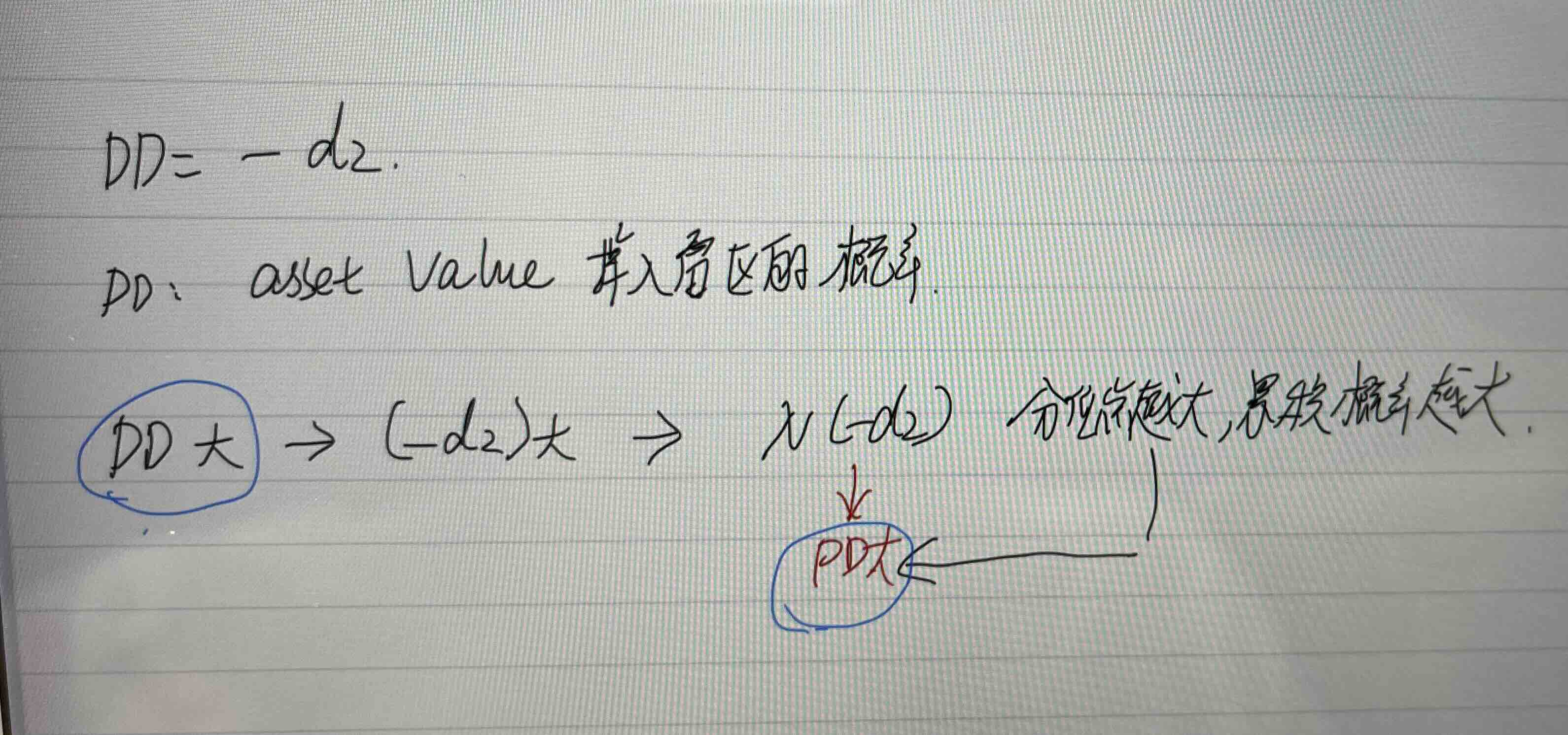NO.PZ2024042601000017
问题如下:
A credit manager in the counterparty risk division of a large bank uses a simplified version of the Merton model to monitor the relative vulnerability of its largest counterparties to changes in their valuation and financial conditions. In order to assess the risk of default of three particular counterparties, the manager calculates the distance to default assuming a 1-year horizon (t=1). The counterparties: Company P, Company Q, and Company R, belong to the same industry. Selected information on the companies is provided in the table below:
Using the information above with the assumption that short-term debt is the only liability for each company, and the approximation formula of the distance to default, what is the correct ranking of the counterparties, from most likely to least likely to default?
选项:
A.
P; R; Q
B.
Q; P; R
C.
Q; R; P
D.
R; Q; P
解释:
Distance to Default (DtD) approximates the number of standard deviations to reach the default threshold; thus, the higher the DTD, the least likely to default.
DtD can be simplified by reducing the forward time periods to 1 (t=1) and minimizing the drift factors (µ -σ2/2) that tend to be small (assumed to equal 0) over one period to yield:
[ln(market value of assets/face value of debt)/annual volatility of asset value)].
Using this formula results in: Company P = ln(100/60)/0.10 = 5.11
Company Q = ln(150/100)/0.07 = 5.79
Company R = ln(250/160)/0.08 = 5.58
Q is least likely to default; R is in the middle; P is most likely to default.
老师好,为什么经典题视频说DD越大,PD越小?
视频里提到“DD是资产价值掉入雷区的概率”但后面又说“DD是资产价值距离雷区的距离”这完全是两个不同的意思
如果是按照“DD是资产价值掉入雷区的概率”,那么DD=-d2,DD大,-d2大,N(-d2)=PD=累计概率大,应该是DD大,PD大啊?




